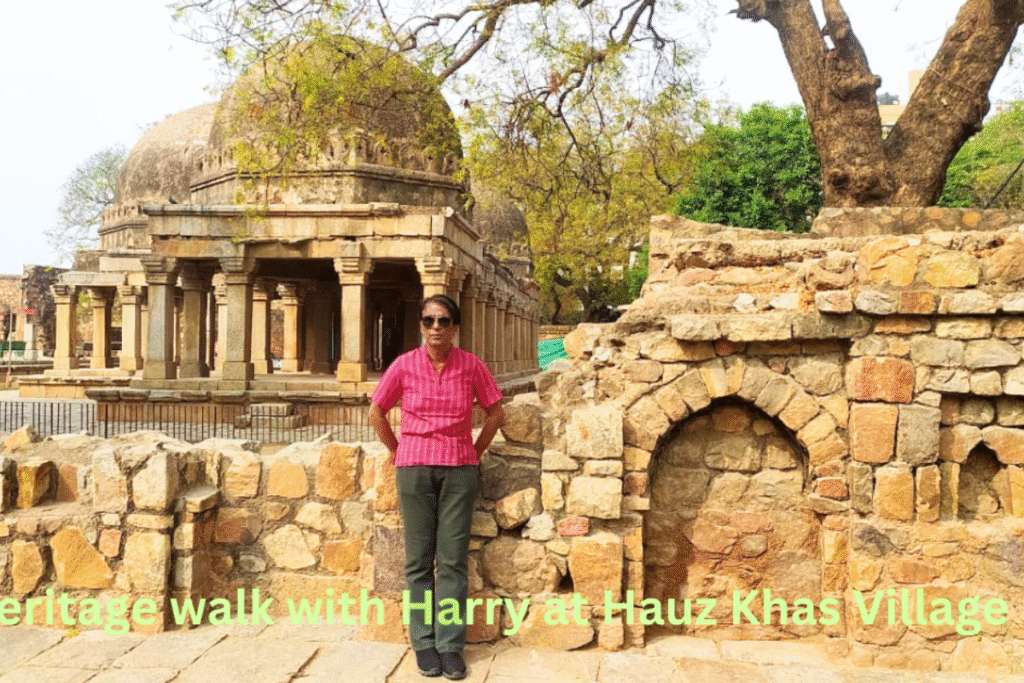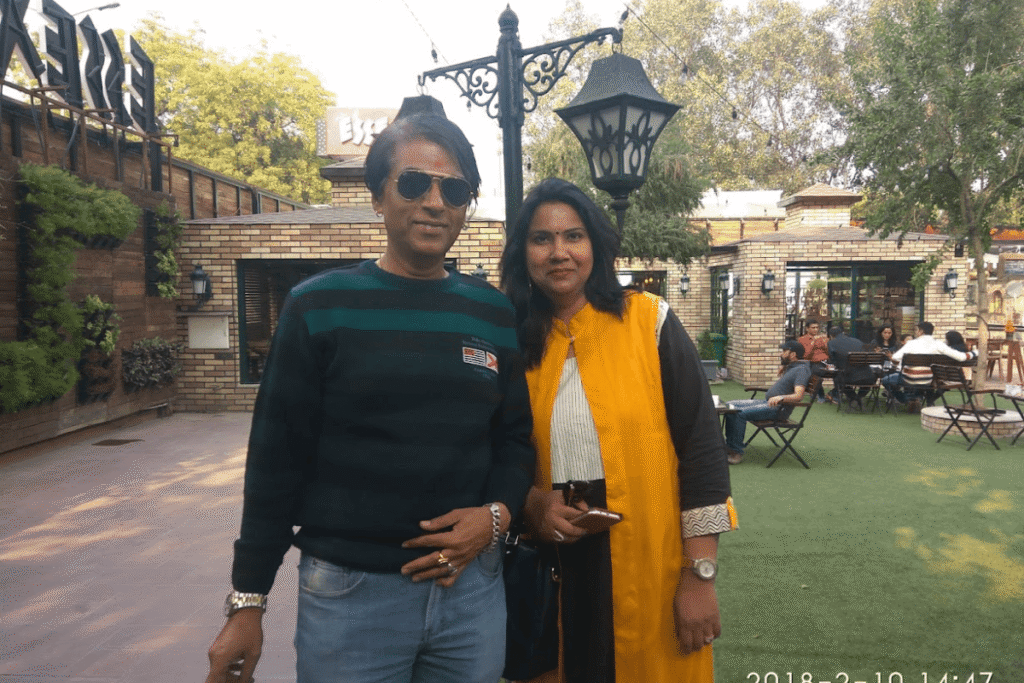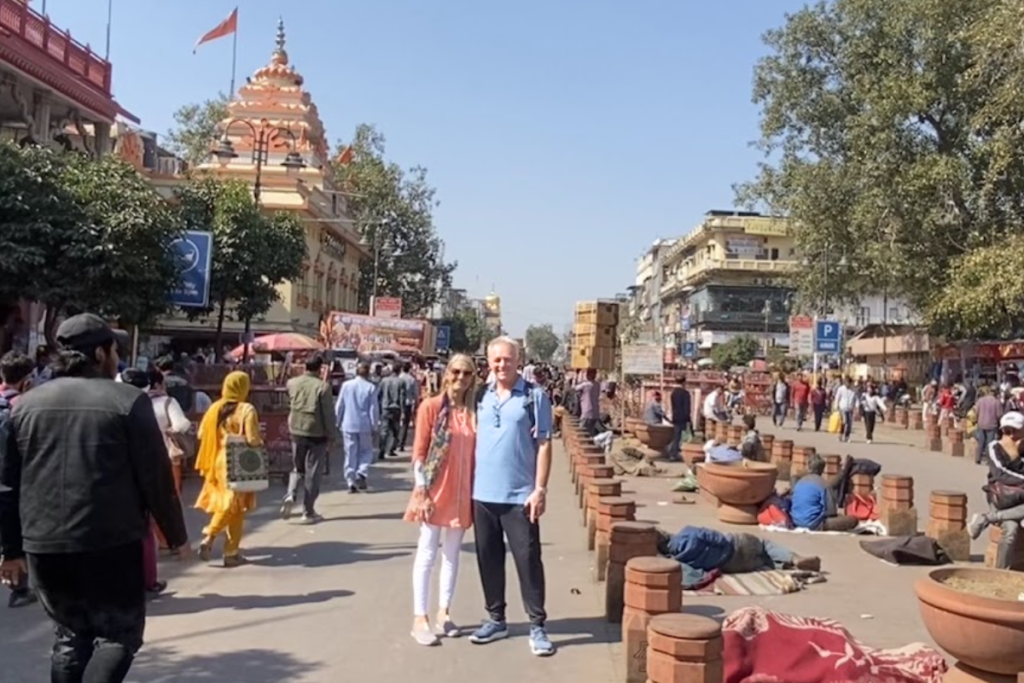Hauz Khas Village Walk: For heritage walk lovers, Hauz Khas Village offers an enchanting blend of history, culture, and vibrant energy that tempts you to book this unforgettable experience. As you step into the heart of Delhi’s heritage, the Hauz Khas Village Walk takes you on a journey through time, where ancient monuments whisper stories of the past.

Hauz Khas Village Walk A Complete History
Hauz Khas Village, one of the most vibrant neighborhoods in South Delhi, holds a fascinating blend of history, culture, and modern charm. The name “Hauz Khas” literally means Royal Water Tank, built during the reign of Alauddin Khilji in the 13th century to supply water to the Siri Fort city. This massive reservoir became the heart of the area, supporting life and agriculture for centuries.
During the 14th century, Firoz Shah Tughlaq restored the tank and built beautiful monuments around it, including his own tomb, madrasa (Islamic seminary), and pavilions. The Hauz Khas complex soon became a center for learning and culture, attracting scholars and poets from across the region.
In the later Mughal period, the area lost prominence and fell into decay. By the 1980s, Hauz Khas Village was revived as an artist hub, blending medieval ruins with chic boutiques, cafes, and art galleries. Today, a Hauz Khas Village Walk offers a rare chance to explore centuries-old tombs, stunning lake views, street art, and the lively energy of Delhi’s creative crowd.
Hauz Khas Tour Guide – Exploring History, Art, and Heritage
Introduction – Why Hauz Khas Village Walk is Special

Delhi is full of monuments, but Hauz Khas Village Walk offers something unique — a combination of medieval Sultanate-era history, peaceful green parks, intriguing tombs, urban street art, and a lively café culture. For young travelers or first-time visitors, this walk is like time travel — one moment you’re standing inside a 700-year-old fort, and the next you’re sipping chai at a hip street café.
The area gets its name from “Hauz Khas,” meaning “Royal Tank” in Persian. It was built during the rule of Alauddin Khilji in the 13th century to store water for the people of Siri, one of the ancient cities of Delhi. Over centuries, rulers like Feroz Shah Tughlaq added madrasas, mosques, and tombs, making it a center for learning and culture. Today, the village around it has transformed into a buzzing urban hub without losing its old-world charm.
Read More About Hauz Khas Village Complex
Hauz Khas Village Walk Overview Route
Your Hauz Khas Village Walk begins at Green Park Metro Station and passes through historical monuments, hidden gems, and charming streets before ending at Hauz Khas Metro Station.

Green Park Metro Station – Where It All Begins
Your journey starts at Green Park Metro Station on the Yellow Line. It’s the perfect place to gather your energy, fill your water bottle, and prepare for a day of walking through history and modern culture.
Uphaar Cinema – A Place of Memories
A short walk from the metro takes you to Uphaar Cinema, once a famous movie theater in Delhi. While it no longer operates, it remains etched in the city’s memory due to a tragic fire incident in 1997. For history lovers, it’s a reminder that Delhi’s heritage isn’t just about ancient monuments — the city’s modern past is equally significant.
Chhoti Gumti – The Little Dome
Tucked away near Green Park, Chhoti Gumti is a small tomb from the Lodi era. With its square structure, lotus finials, and beautiful plasterwork, it’s a peaceful spot where you can take your first historical photos of the day.
Dadi-Poti ka Maqbara – The Tale of Two Tombs
A short stroll ahead lies the Dadi-Poti ka Maqbara, two tombs from the Lodi period. One is larger (“Dadi”) and the other smaller (“Poti”), and although no one knows exactly who’s buried here, their contrasting sizes have sparked local legends. Some say it’s a grandmother and granddaughter; others believe they were unrelated nobles.
Jagannath Temple – A Spiritual Stop
Before heading to Hauz Khas Fort, visit the Jagannath Temple, dedicated to Lord Jagannath of Puri. This temple is vibrant, and during the annual Rath Yatra, it becomes a center of cultural celebration.
Hauz Khas Fort & Lake – The Heart of the Walk
The Hauz Khas Fort is the centerpiece of this walk. Built in the 14th century, it includes a madrasa (Islamic school), pavilions, and the tomb of Feroz Shah Tughlaq. The fort overlooks the Hauz Khas Lake, a peaceful water body originally constructed by Alauddin Khilji. It’s a perfect spot for young travelers to relax, take photos, or watch the sunset.
Feroz Shah Tomb – Resting Place of the Sultan
Inside the fort complex lies the tomb of Feroz Shah Tughlaq. This Sultan was known for his public works and love for architecture. His resting place, surrounded by student cells and mosques, feels like stepping into a history book.
Art Streets of Hauz Khas Village – For the Creative Soul
Once you exit the fort, the art streets of Hauz Khas Village greet you with colorful murals, quirky boutiques, and photo-worthy graffiti. It’s a favorite hangout for Delhi’s youth, offering a mix of bohemian charm and urban culture.
Snacks and Tea – A Tasty Break

No walk in Delhi is complete without street food. Grab a steaming cup of chai, some hot pakoras, or momos from one of the small vendors. Hauz Khas Village is also home to chic cafés if you prefer coffee and pastries.
Deer Park Tomb & Mosque – Nature Meets History
Walking deeper into Deer Park, you’ll find hidden tombs and an old mosque. The park is also home to deer, rabbits, and peacocks, making it an unexpected green escape in the heart of Delhi.
Chor Minar – Tower of Thieves
One of the most fascinating and eerie monuments on the walk, Chor Minar was allegedly used during the Khilji era to display the heads of thieves as a warning. Its 225 small holes still intrigue visitors today.
Sufi Makhdum’s Tomb Complex – A Spiritual End
Before ending the walk, visit the tomb complex of Makhdum Sahib, a revered Sufi saint. The peaceful atmosphere here is perfect for a few quiet moments of reflection after your busy exploration.
Hauz Khas Metro Station – Journey’s End
Your Hauz Khas Village Walk concludes at the Hauz Khas Metro Station. By now, you’ve experienced centuries of history, vibrant art, nature, and food — all in a single walk.
Nearby: Qutub Minar – Where the Story of Delhi’s Sultanate Begins
Tips for Young Travelers and First-Time Visitors
- Wear comfortable shoes – The route involves a lot of walking.
- Carry water – Especially in summer months.
- Keep some cash – For street food and small vendors.
- Best time to visit – Early morning or late afternoon for pleasant weather.
- Photography tip – The fort and lake at sunset are Instagram-perfect.
Nearby: Lodhi Garden – Tracing the Legacy of the Afghan Sultans
Nearest Metro Stations
- Starting Point: Green Park Metro Station (Yellow Line)
- Ending Point: Hauz Khas Metro Station (Yellow Line)
Final Thoughts
The Hauz Khas Village Walk is more than just a sightseeing tour — it’s a journey through Delhi’s soul. It combines Sultanate history, spiritual calm, urban art, and youthful energy into one unforgettable experience. For young readers and first-time visitors, it’s the perfect introduction to the city’s layered identity. If you want to truly understand Delhi, you must walk it — and Hauz Khas Village is one of the best places to start.
Hauz Khas Village Nightlife – Ultimate Delhi After-Dark Guide
Hauz Khas Village nightlife blends history, culture, and modern fun. From buzzing bars and rooftop cafés to live music and lake views, it’s Delhi’s go-to party hub after sunset. Enjoy vibrant streets, great drinks, and unforgettable vibes. Experience Hauz Khas Village nightlife – bars, music, and lake views in Delhi’s top nightspot.








